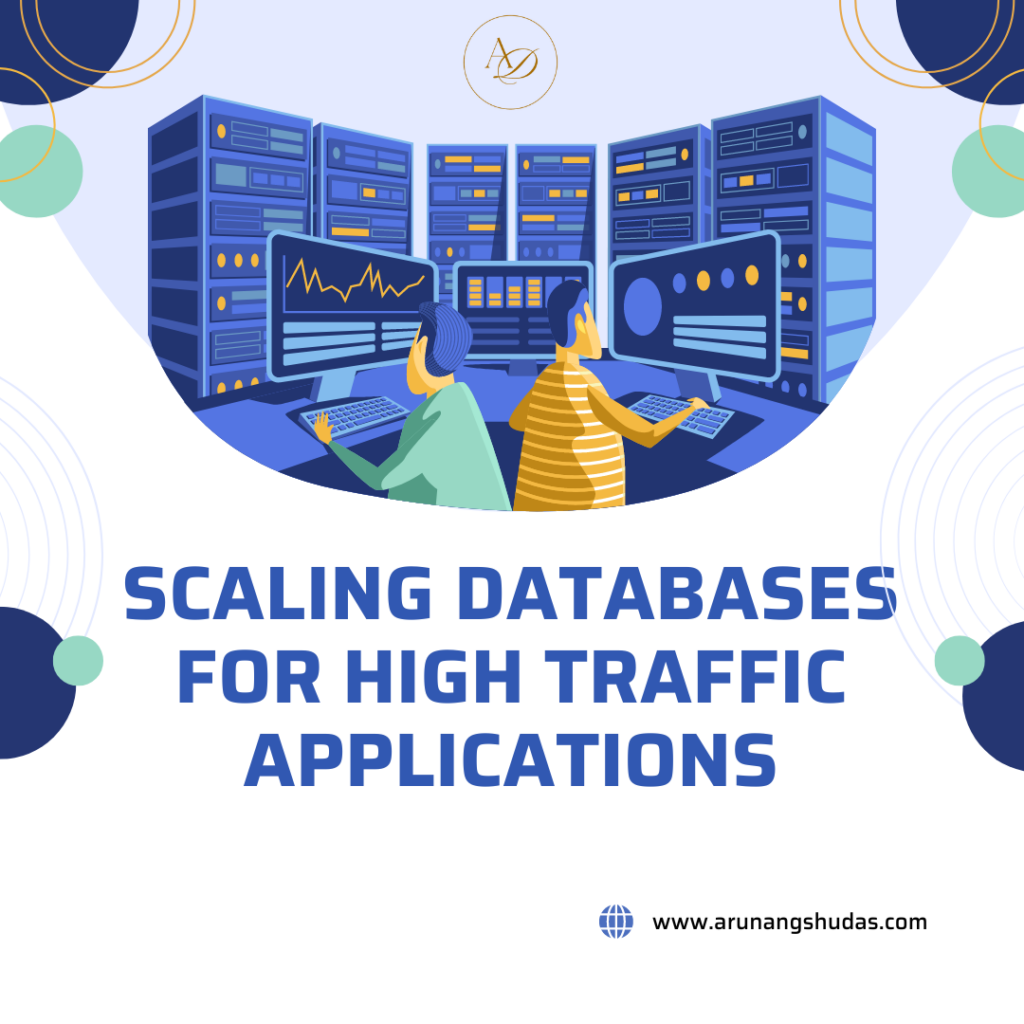In today’s data-driven world, high-traffic applications must be designed to handle millions of requests without compromising performance. Database scalability plays a critical role in achieving such reliability.
Understanding Database Scalability
Database scalability is the process of expanding a database’s capacity to handle a growing amount of data or traffic. It’s essential for modern applications where the volume of users and data can increase exponentially. There are two main types of scalability:
- Vertical Scaling (Scale-Up)
- Involves adding more power (CPU, RAM) to your existing database server.
- Pros: Easier to implement; no need for application-level changes.
- Cons: Has a limit to how much you can add; can become a single point of failure.
- Horizontal Scaling (Scale-Out)
- Involves adding more database servers and distributing the load across them.
- Pros: Practically limitless scaling potential; reduces risk of a single point of failure.
- Cons: More complex to implement; often requires changes in application logic.
Scaling Strategies
To make your database scalable, there are various strategies you can adopt. Below, we’ll explore the most common and effective methods for scaling databases:
1. Sharding
Sharding is a horizontal partitioning technique that splits data across multiple servers, known as shards. Each shard contains a subset of data, which helps in reducing the load on a single database.
- Advantages:
- Improved performance since queries are distributed across multiple shards.
- Greater scalability, as each shard can be placed on a separate server.
- Challenges:
- Managing shard keys and ensuring even distribution of data.
- Handling cross-shard queries can be complex.
2. Read Replicas
For read-heavy applications, read replicas are an efficient way to scale the database. The master database handles write operations, while read replicas handle read requests.
- Advantages:
- Improved read performance without affecting the master database.
- Useful for analytics and reporting.
- Challenges:
- Replication lag can lead to eventual consistency issues.
- More complex failover management.
3. Database Caching
Caching reduces the load on the database by storing frequently accessed data in-memory using tools like Redis or Memcached.
- Advantages:
- Reduces query load and speeds up data retrieval.
- Improves user experience by decreasing response times.
- Best Practices:
- Use caching for data that doesn’t change frequently.
- Implement cache invalidation strategies to avoid stale data.
4. Index Optimization
Proper indexing can significantly improve query performance and reduce database load. It’s important to optimize indexes for both read and write operations.
- Techniques:
- Use composite indexes for queries involving multiple columns.
- Remove unused or redundant indexes that slow down write operations.
5. Database Partitioning
Partitioning is the process of splitting a database table into smaller, more manageable pieces. This helps in balancing the load and improves performance.
- Types of Partitioning:
- Range Partitioning: Dividing data based on a range of values.
- List Partitioning: Grouping data based on a specific set of values.
- Benefits:
- Enhanced query performance by scanning smaller data sets.
- Better maintenance, as partitions can be managed independently.
Choosing the Right Database for Scaling
Selecting the right type of database also plays a crucial role in scalability. Here are some popular choices:
- SQL Databases (e.g., MySQL, PostgreSQL)
- SQL databases are suitable for applications with strong consistency requirements.
- Offer features like read replicas and partitioning for scaling.
- NoSQL Databases (e.g., MongoDB, Cassandra)
- NoSQL databases are ideal for handling unstructured data and provide more flexibility in scaling.
- MongoDB supports horizontal scaling with sharding.
- Cassandra is designed for high availability and linear scalability.
- Distributed SQL Databases (e.g., CockroachDB, Google Spanner)
- Offer the benefits of SQL with the scalability of NoSQL.
- Ensure ACID transactions across distributed clusters, making them ideal for applications that need both consistency and scalability.
Handling High Traffic with Load Balancing
Database load balancing helps distribute traffic across multiple servers, avoiding bottlenecks and ensuring high availability.
- Techniques:
- Proxy-based Load Balancing: Uses a proxy server like HAProxy or ProxySQL to route queries to the appropriate database server.
- Application-level Load Balancing: Application logic determines the best database replica or shard to send the query.
- Benefits:
- Ensures even distribution of load.
- Reduces the chance of any one server being overwhelmed.
Best Practices for Scaling Databases
1. Monitor Performance Continuously
Use monitoring tools like Prometheus, Grafana, or New Relic to track database metrics and anticipate scaling needs before performance starts degrading.
2. Automate Scaling with Cloud Solutions
Cloud services like AWS RDS, Azure SQL Database, and Google Cloud Spanner offer managed scaling options. They provide auto-scaling features, taking away the complexity of manual scaling.
3. Implement Failover Strategies
To ensure high availability, use failover strategies such as:
- Master-Slave Replication Failover: Automatically promote a slave to master if the master fails.
- Cluster-based Failover: Use clustering tools like Kubernetes for automatic failover in containerized environments.
4. Optimize Query Performance
Analyze slow queries with tools like MySQL’s EXPLAIN or MongoDB’s Profiler. Optimizing queries ensures that the database can handle more requests efficiently.
Scaling in Real-Life Scenarios
Let’s take a look at how major tech companies handle database scaling:
- Netflix: Uses Cassandra for its scalability and high write throughput. Netflix also leverages DynamoDB for its high availability.
- Facebook: Uses MySQL, but with significant modifications. It sharded data early in its growth phase, and the infrastructure today includes multiple database technologies.
- Amazon: Relies on DynamoDB for many of its services, given its distributed architecture and scalability features.
Common Pitfalls to Avoid
- Over-Scaling Too Early
- Scaling prematurely can increase infrastructure costs without significant benefits. Instead, scale as per demand and performance indicators.
- Ignoring Write Bottlenecks
- While read replicas help with read scaling, write operations often become a bottleneck. It’s important to balance read and write optimizations.
- Lack of Proper Backups
- With distributed databases, having a backup plan is crucial. Use automated backups and test recovery to avoid data loss during scaling operations.
Conclusion
Scaling databases for high-traffic applications is a challenging but essential part of ensuring application performance and reliability. By leveraging techniques like sharding, read replicas, caching, and selecting the right database type, you can effectively handle high traffic and ensure your application performs seamlessly as demand grows.
Remember, scalability isn’t a one-time task; it’s an ongoing process. Continuously monitor your database performance, adapt your scaling strategies, and always keep learning about new technologies and approaches that can further improve efficiency.
If you found this blog helpful, explore our related articles like “Caching Strategies for High-Performance Backends” and “Database Design Principles for Scalable Applications” to dive deeper into building a robust, scalable infrastructure for your applications.




